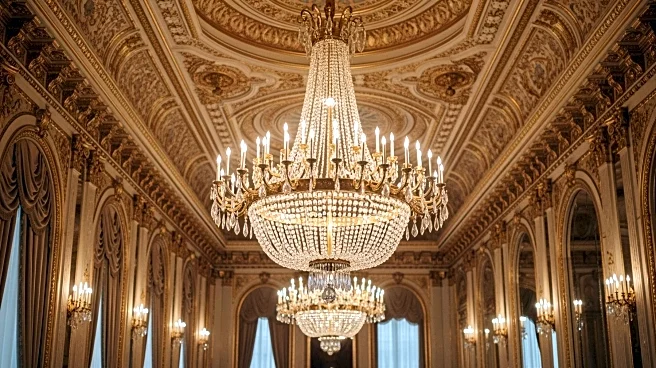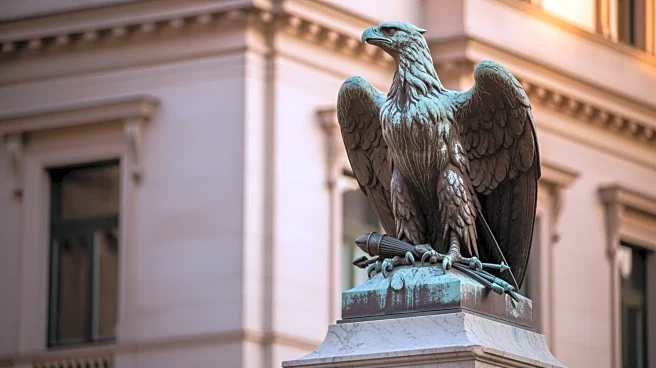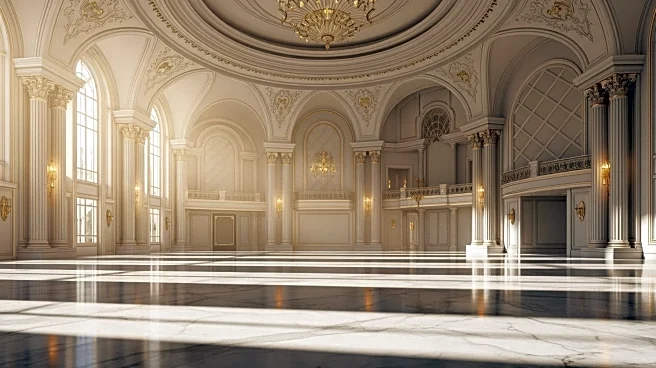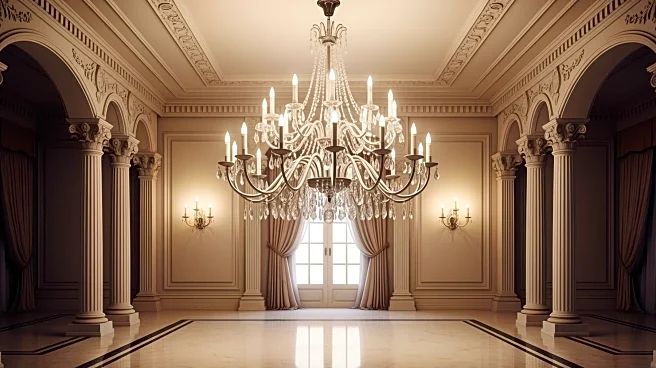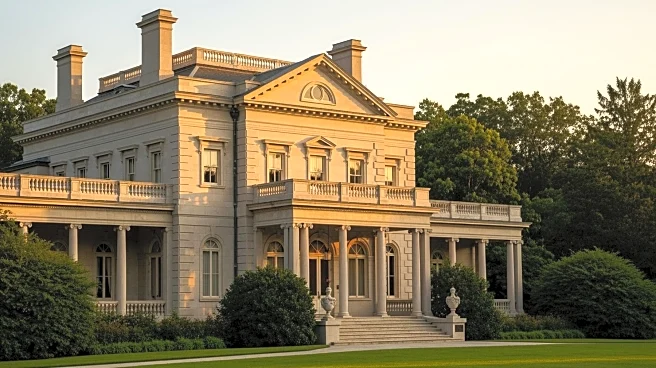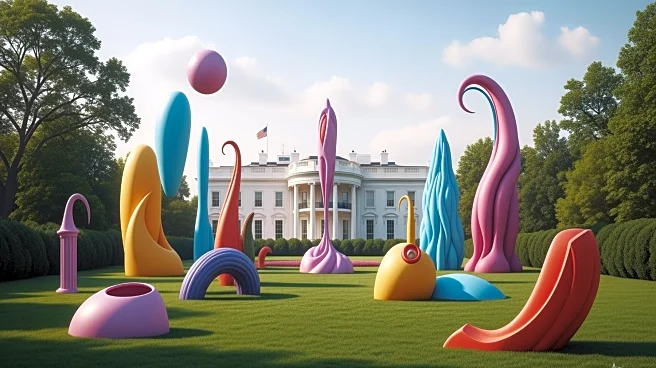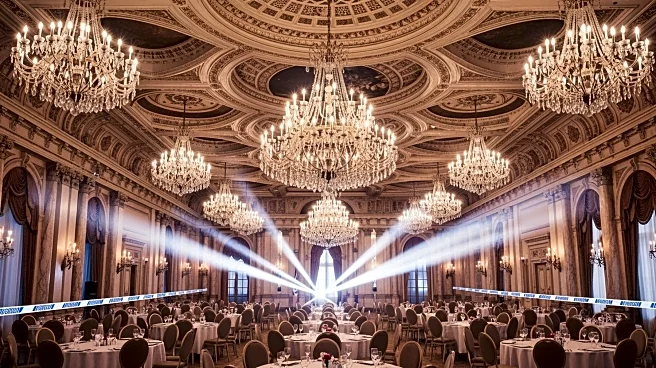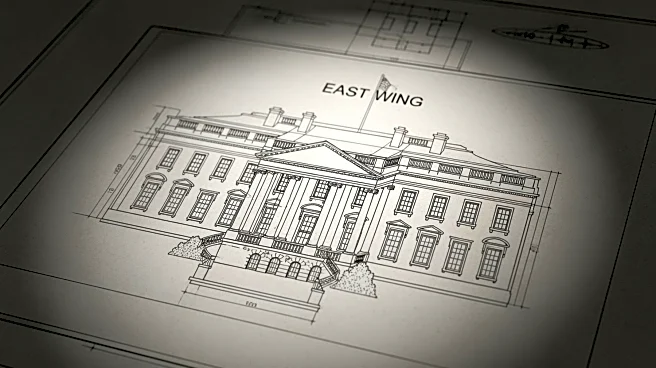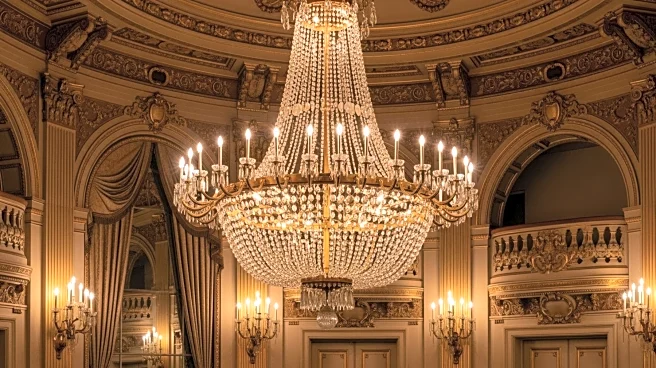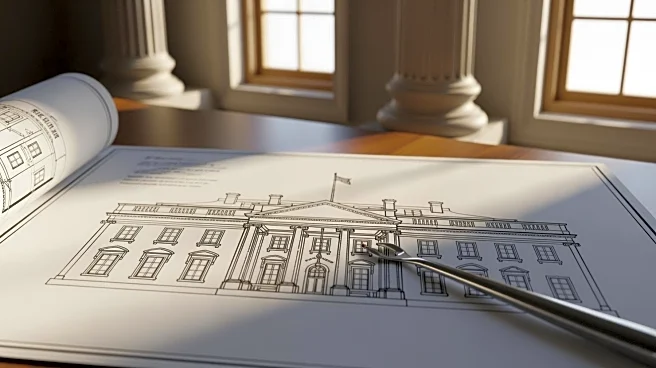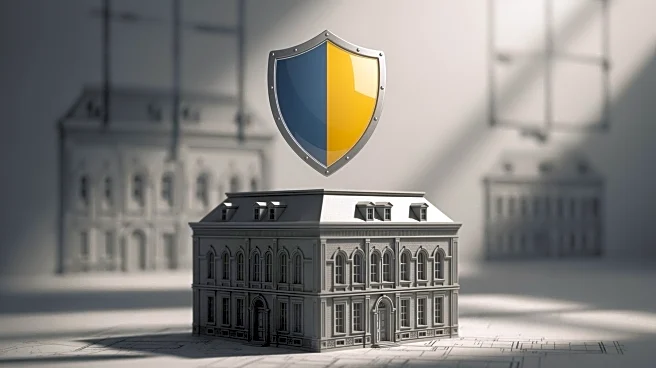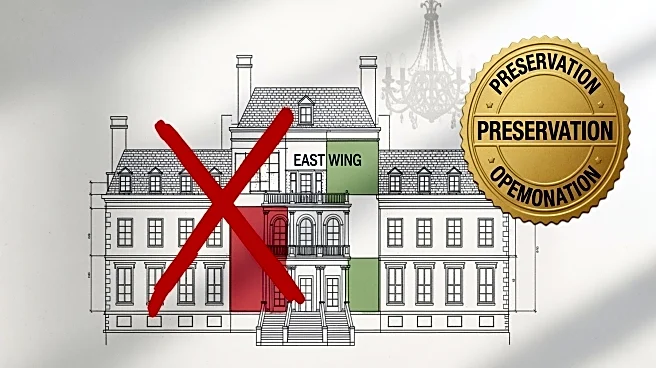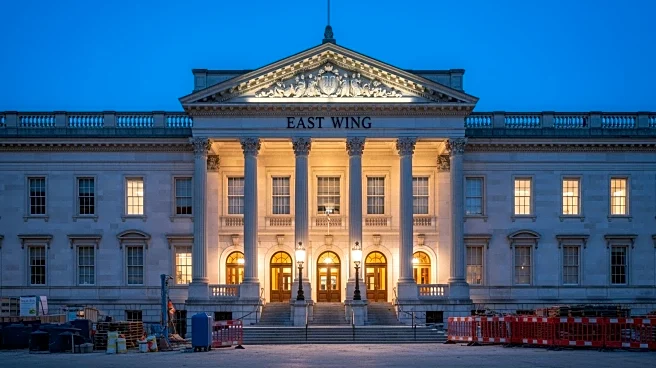What's Happening?
President Donald Trump is reportedly considering naming the new $300 million White House ballroom after himself, according to senior administration officials. The ballroom, referred to as 'The President Donald J. Trump Ballroom,' is part of a controversial
renovation project that involves demolishing the East Wing of the White House. Critics have labeled the project as a 'vanity project,' expressing concerns over its impact on the historic site. The National Trust for Historic Preservation has urged a pause in demolition until a planning commission review is completed. Trump argues the need for a large entertaining space, criticizing past practices of hosting events in tents. The project is funded by private donors, including Trump himself, raising ethical concerns about potential conflicts of interest.
Why It's Important?
The renovation of the White House to include a new ballroom has sparked significant debate over historical preservation and ethical considerations. The project, funded by private donors, raises questions about the influence of wealthy individuals and corporations on public policy and access to the administration. The demolition of the East Wing, a structure with historical significance, has drawn criticism from preservationists and historians. The decision to name the ballroom after President Trump further fuels the controversy, highlighting the intersection of personal branding and public office. The project reflects broader ambitions to redefine presidential aesthetics, impacting the cultural and historical landscape of the White House.
What's Next?
Construction of the ballroom is expected to be completed before the end of Trump's second term in January 2029. The National Trust for Historic Preservation and other stakeholders may continue to push for a review of the project, potentially influencing its progress. The funding model and donor list could lead to further scrutiny and discussions about transparency and ethics in government projects. The completion of the ballroom may set a precedent for future renovations and changes to the White House, impacting its historical integrity and public perception.
Beyond the Headlines
The renovation project raises deeper questions about the balance between modernization and preservation of historical sites. The ethical implications of private funding for public projects highlight concerns about access and influence in government. The branding of the ballroom with Trump's name reflects a broader trend of personal branding in politics, influencing public perception and legacy. The project may trigger discussions about the role of aesthetics in political leadership and the impact of personal preferences on public spaces.
